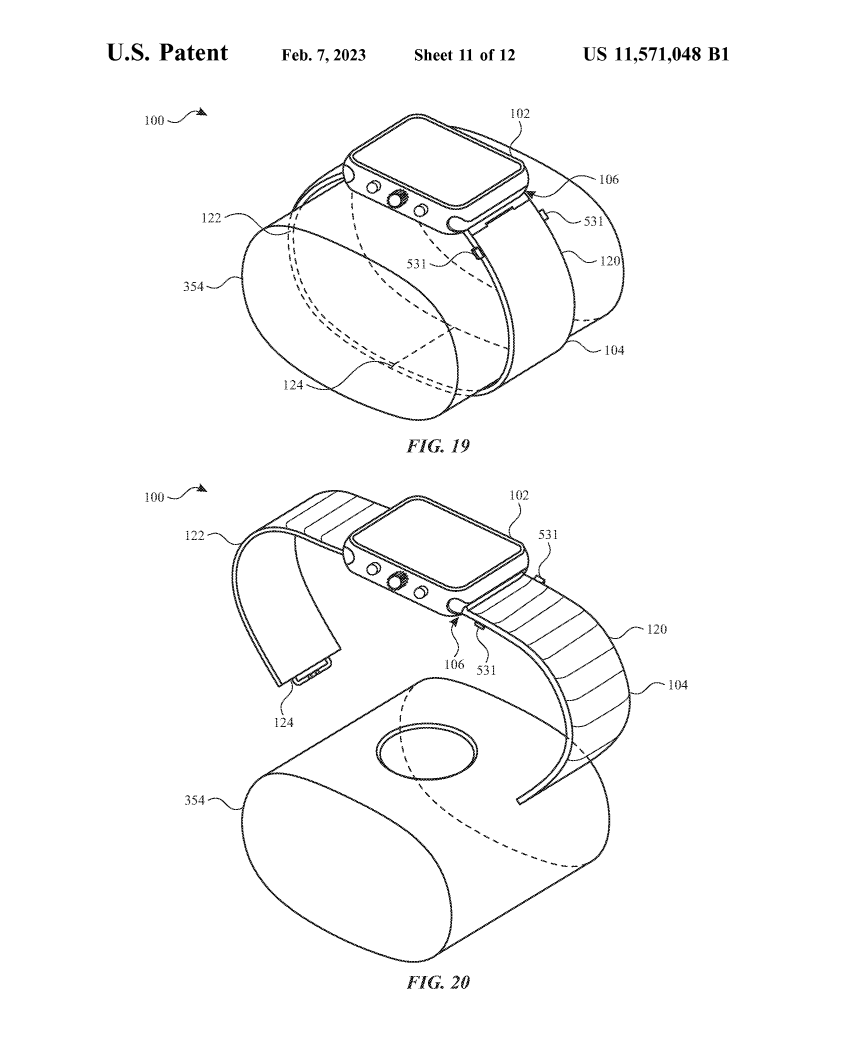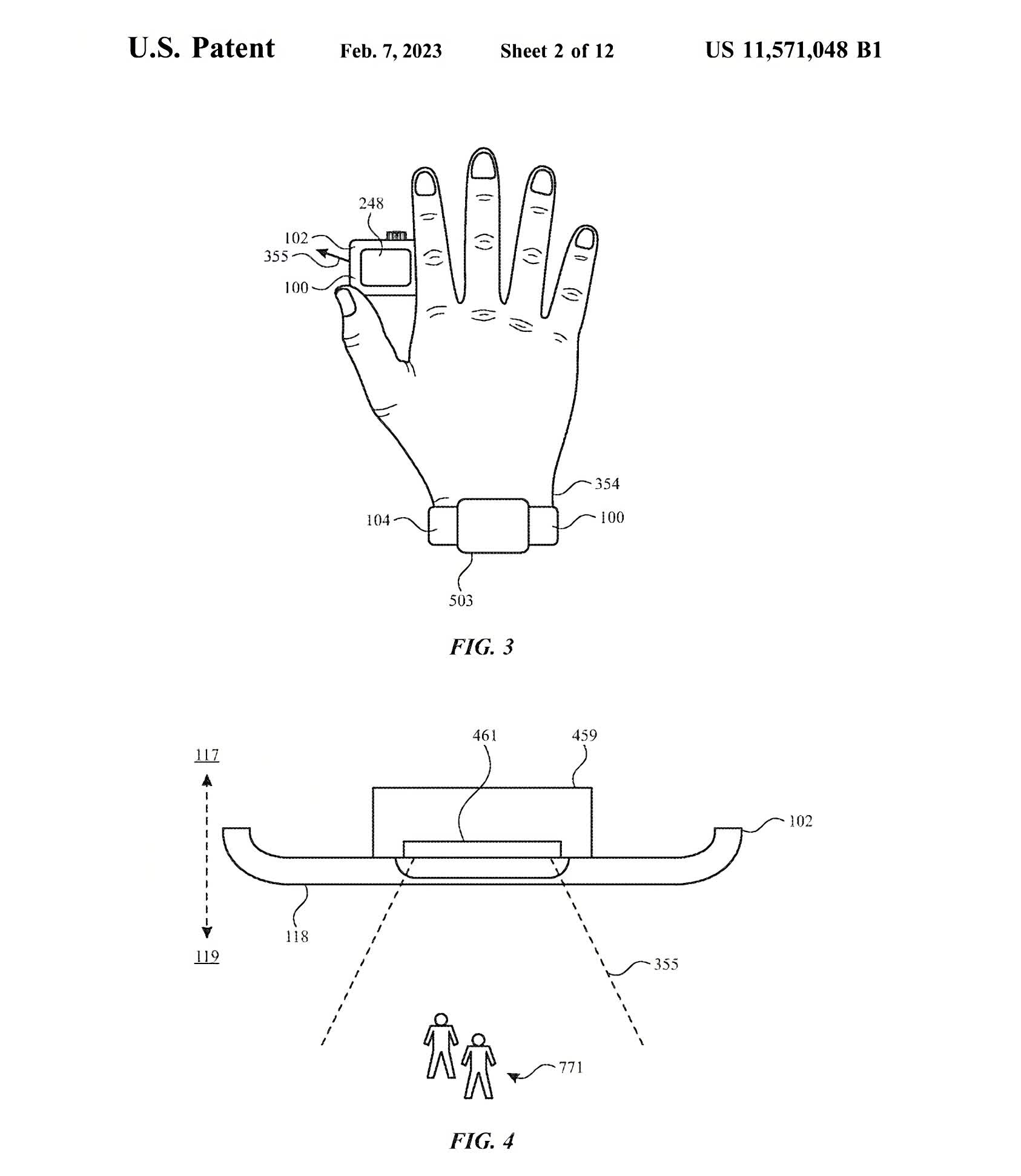
[ad_1]
Through the looking glass: Apple was granted a new patent for a detachable watch-based camera retention system earlier this week. The patent includes a detachable band design and a quick-release retention mechanism to support a watch-based camera. While there’s no guarantee it will be produced, the patent is good indication that Apple is actively looking to deliver new features for their watch-wearing fans.
Issued by the U.S. Patent and Trademark Office on February 7, the new patent (US-11571048-B1) focuses specifically on a strap-based, quick-release system that allows for convenient access to an integrated watch-based camera.
Based on the patent information, the retention system could give users the option to quickly and easily remove the watch face, capture photos from a bottom-facing camera, and then easily replace the device back in the original position. The information was first reported by Patently Apple…

This new strap-based system is hardly Apple’s first attempt at patenting watch-based camera functionality. In 2019, the company was awarded US-10331083-B1 for a watch band with an integrated, flexible optical sensor. If made available, this rotatable camera would allowing photos to be taken without the need to remove the watch from the user’s wrist.
Apple wouldn’t be the first company to bring small-form camera technology to wearable devices either. Samsung attempted to normalize the wearable camera concept with the Galaxy Gear’s initial release in September 2013. However, the device was quickly overshadowed by the Apple Watch and users weren’t wowed by the Galaxy’s integrated 1.9MP camera.

While a high-quality embedded camera could have practical use for some, it does raise potential privacy and security concerns for others.
The ability to capture photos covertly by removing the need for a larger, handheld camera or phone opens the door to anything from secret, unauthorized, and compromising photos to increased risk of corporate espionage. The embedded cameras would require a new level of security and awareness to ensure they were not improperly used in areas such as schools, locker rooms, restrooms, or in areas where confidential documents and information are at risk of being captured.
The prevalence of technology like embedded cameras in wearable devices places even more emphasis on the enforcement of laws and acts such as the Video Voyeurism Prevention Act. The act, which protects individuals from being recorded in private areas without their consent, is the type of protection that is integral to ensuring technologies like watch-based cameras are made available for responsible users while providing protections for potential victims of misuse.
Image credit: David Švihovec
[ad_2]